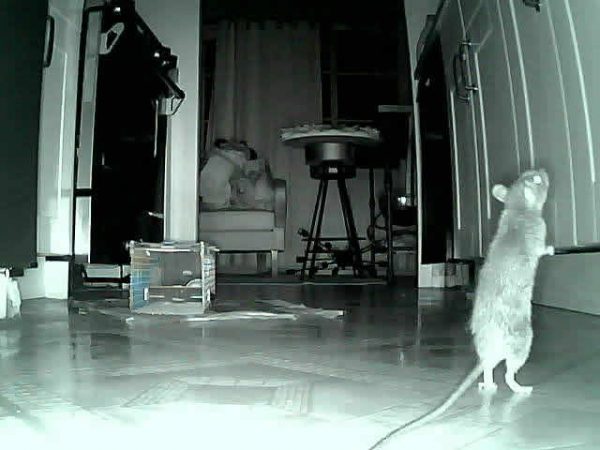By Cassandra Reinhart, Special to the Independent
Though Megan Iglesias has only lived at 1530 Glenneyre Street for a couple of months, she says her new neighborhood stinks.
“I do notice it from time to time; there are days when it is really bad,” Iglesias said.
Iglesias’ home is located almost directly across from the Bluebird Canyon lift station, located at the corner of Calliope and Glenneyre Streets. Not thinking the lift station would emit gas, Iglesias and her husband didn’t know where the rotten smell was coming from and asked the gas company to inspect their home, to no avail.

Renters think the Bluebird lift station attracts rodents to their neighboring home. Photo by Cassandra Reinhart.
Iglesias and others in the neighborhood who have lived with the sewer smell for years have been promised some relief. At its Nov. 14 meeting, the Laguna Beach City Council approved a $99,985 contract to CivilSource engineering to eradicate odors coming from the Bluebird facility. A lift station is a low point in the sewer collection system where wastewater collects and then is pumped to a higher point to allow gravity to drain the system to a treatment facility.
“Historically, there have been complaints regarding odors surrounding the lift station,” said David Shissler, the city’s water quality director, especially at the “Glenneyre dip” and manholes next to the lift station.
Twenty-five lift stations, the principle source of odors, redirect wastewater within the city’s sewage collection system, comprised of 95 miles of pipelines. Collectively, the system moves sewage to the Coastal Treatment Plant in Aliso Canyon.
The city’s odor control system is designed to treat hydrogen sulfide and other sewer gases found in municipal wastewater collection systems. Although hydrogen sulfide is a toxic gas, it will generally not harm people at low levels, according to the Environmental Protection Agency. At 150 parts per million, or 150 times the amount detectible by most people, negative health effects can occur.
There is not enough gas generated in most sewers for concentrations to approach levels dangerous to health, the EPA says. Escaped hydrogen sulfide can be caused by slime or sludge in pipes or plugged sewer flow.
By hiring CivilSource, the city intends to design an enclosure around the odor control system to stop nuisance gasses from escaping. It will be built immediately adjacent to the Bluebird lift station, and the architecture of the enclosure will match the existing lift station.
“We have had to deal with the ‘dip’ odors which have been around forever,” Shissler said. “Until they have a technology that can address the small stations, this is the most economically efficient way of eliminating the odors in that area.”
Still other people who live very close to the lift station say odor hasn’t been the only problem. Residents who didn’t want to be identified told the Indy they have rats running rampant in their home at night. So bad, they have set up traps and motion detecting cameras to catch the rats in action.
“We have all kinds of rodents running around because of the sewer,” the man said. “They run up the walls, go on our counters, running around on all your food and stuff.”
“I wouldn’t want to buy this house,” his wife said. “I don’t mind the traffic or anything, but the sewer, they seem to have a lot of problems because they are always in the manhole. We don’t keep the door open on purpose.”
The couple hasn’t reported the rodent problem to the city because they are renters and don’t want to cause problems with their landlord. When asked about the rodents, Shissler said the lift station doesn’t have a rodent problem.
“If we did, rodents are addressed by the county vector control unit,” Shissler said.
Adam Casper, who rents a unit near the lift station at the corner of Calliope and Glenneyre Streets, is an artist who travels a lot, and says he doesn’t really notice a smell.
“I’m a renter; it is what it is,” Casper said. “It’s more of a dissipation smell, it’s not really in my face.”
The city plans to complete the design for the odor enclosure project by next spring and begin construction next fall. The city will hold a neighborhood meeting for feedback once a rendering of the proposed improvements is presented to the Design Review Board.
For Megan Iglesias, the news on the odor fix can’t come soon enough.
“Were trying to have kids, so it’s a concern,” she said.




